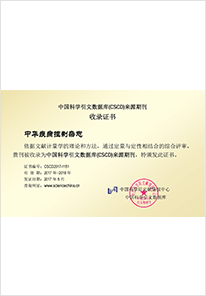2022 Vol. 26, No. 1
Display Method:
2022, 26(1): 1-6.
doi: 10.16462/j.cnki.zhjbkz.2022.01.001
Abstract:
2022, 26(1): 7-13.
doi: 10.16462/j.cnki.zhjbkz.2022.01.002
Abstract:
2022, 26(1): 14-20.
doi: 10.16462/j.cnki.zhjbkz.2022.01.003
Abstract:
2022, 26(1): 21-27.
doi: 10.16462/j.cnki.zhjbkz.2022.01.004
Abstract:
2022, 26(1): 28-33, 79.
doi: 10.16462/j.cnki.zhjbkz.2022.01.005
Abstract:
2022, 26(1): 34-39, 111.
doi: 10.16462/j.cnki.zhjbkz.2022.01.006
Abstract:
2022, 26(1): 46-50.
doi: 10.16462/j.cnki.zhjbkz.2022.01.008
Abstract:
2022, 26(1): 51-55.
doi: 10.16462/j.cnki.zhjbkz.2022.01.009
Abstract:
2022, 26(1): 61-67, 85.
doi: 10.16462/j.cnki.zhjbkz.2022.01.011
Abstract:
2022, 26(1): 68-73.
doi: 10.16462/j.cnki.zhjbkz.2022.01.012
Abstract:
2022, 26(1): 80-85.
doi: 10.16462/j.cnki.zhjbkz.2022.01.014
Abstract:
2022, 26(1): 86-90.
doi: 10.16462/j.cnki.zhjbkz.2022.01.015
Abstract:
2022, 26(1): 91-98.
doi: 10.16462/j.cnki.zhjbkz.2022.01.016
Abstract:
The association between military experience and health among older adults aged 60 and above in China
2022, 26(1): 105-111.
doi: 10.16462/j.cnki.zhjbkz.2022.01.018
Abstract:
2022, 26(1): 112-115.
doi: 10.16462/j.cnki.zhjbkz.2022.01.019
Abstract:


 Email alert
Email alert RSS
RSS Abstract
Abstract HTML
HTML PDF
PDF





